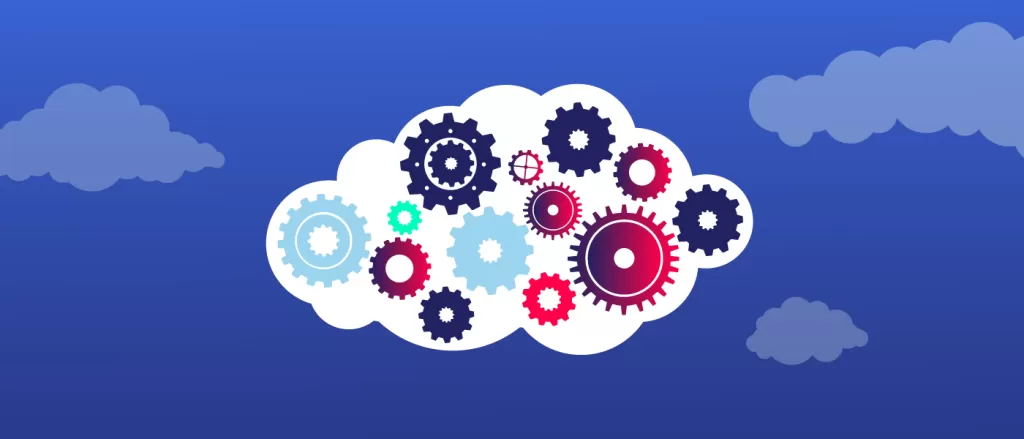Written By:
Scott McAuley
Scott is the IT Director of Texas Management Group, and has been in the IT industry for 25 years.
As businesses rely more on cloud infrastructure, the need for efficiency grows. But what if managing your cloud operations could be automated? That’s where Cloud Automation comes into play.
Cloud Automation is the process of using technology to perform cloud management tasks without manual intervention. It streamlines everything from resource allocation to software updates, freeing up valuable time and reducing human error.
In this article, we’ll break down what Cloud Automation is and explore the key benefits it brings to modern businesses.
Let’s explore the advantages of automating your cloud operations and how it can revolutionize your approach to IT management.
Key Takeaways
- Cloud Automation eliminates manual cloud management, streamlining tasks like resource allocation and software updates, leading to increased efficiency and reduced human error.
- Automation enhances scalability, allowing businesses to automatically adjust resources based on demand, ensuring optimal performance during peak times.
- Security automation standardizes protection, consistently enforcing policies and monitoring for threats, thereby reducing vulnerabilities and enhancing system security.
- Cost savings are achieved through automation, which identifies unused resources and shuts them down, preventing wasted spending and improving financial efficiency.
- Faster time-to-market is realized, as automated processes accelerate product deployment and software updates, enabling businesses to respond swiftly to market demands.
Table of Contents
What is Cloud Automation?

Cloud automation is a powerful innovation that reduces the need for manual intervention in cloud operations. It automates routine tasks, enhancing efficiency and streamlining cloud services.
By using cloud automation tools, businesses can automate essential processes such as configuring, deploying, and managing cloud resources. This simplifies cloud management, ensuring smooth and reliable operations.
Automation tools handle everything from server setup to scaling resources in response to demand. This agility is crucial in today’s fast-paced digital landscape, enabling businesses to stay competitive and efficient.
Cloud orchestration is another critical aspect of automation. It coordinates workflows and services, ensuring seamless integration and optimized performance across the cloud environment.
Implementing cloud automation allows businesses to offload repetitive tasks, freeing up time for strategic initiatives. This leads to growth and innovation, as teams can focus on what matters most.
How Does Cloud Automation Work?
Cloud automation simplifies and manages tasks in cloud environments, improving efficiency and scalability. It uses tools, scripts, and automated processes to handle infrastructure, configuration, software delivery, and more.
Infrastructure is provisioned through Infrastructure-as-Code (IaC) tools. Automation scripts manage configurations, while CI/CD pipelines streamline software deployment.
Auto-scaling adjusts resources dynamically based on demand. Monitoring tools track performance and alert teams to any potential issues.
Security automation ensures compliance and enforces security policies. Cost optimization tools identify ways to reduce expenses and maximize cloud investments.
8 Types of Cloud Automation
Businesses today depend on technology more than ever. Understanding cloud automation is essential for optimizing tech infrastructure. Cloud automation brings better security, performance, and cost efficiency to organizations.
Below, we explore the main types of cloud automation for modern businesses:
| Type | Description |
|---|---|
| Orchestration & Workflow Automation | Streamlines tasks into workflows. |
| Resource Allocation | Adjusts resources based on workload changes. |
| Infrastructure as Code (IaC) | Manages infrastructure like software code. |
| Configuration Management | Ensures consistent server setups. |
| CI/CD | Enables continuous software delivery. |
| Security Automation | Automates defenses and threat detection. |
| Monitoring & Remediation | Proactively checks and fixes system issues. |
| Cost Management | Identifies cloud cost savings. |
1. Orchestration and Workflow Automation
Orchestration is essential for managing complex cloud systems. It coordinates automated tasks into smooth workflows, ensuring seamless application deployment across resources.
2. Resource Allocation
Efficient resource management is key to handling diverse workloads. Cloud automation adjusts resources as needed, improving performance while cutting excess costs.
3. Infrastructure as Code (IaC)
IaC changes the game in cloud computing. It allows infrastructure to be managed like software code, leading to more reliable deployments and better operational efficiency.
4. Configuration Management
Configuration management ensures consistent server setups. With cloud automation, large-scale systems stay stable and compliant even with constant changes.
5. Continuous Integration/Continuous Deployment (CI/CD)
CI/CD drives fast innovation. It enables frequent software updates, making continuous delivery standard in the development and deployment process.
6. Security Automation
Automating security is no longer optional. Security automation establishes defenses to protect infrastructure and continuously monitors for threats, minimizing risks.
7. Monitoring and Remediation
Proactive monitoring is crucial for maintaining system health. Cloud automation allows instant checks and rapid issue resolution, ensuring systems perform optimally.
8. Cost Management
Cloud automation plays a key role in cost management. It uses tools to monitor cloud usage and discover savings, offering notable cost reductions on platforms like AWS and Azure.
7 Benefits of Cloud Automation
Enterprises aiming to stay competitive are embracing cloud automation. This shift provides transformative benefits, improving performance and business outcomes.
Let’s explore the top benefits of integrating cloud automation into your company:
| Benefit | Description |
|---|---|
| Increased Efficiency | Reduces manual tasks, boosting workforce efficiency. |
| Cost Savings | Adjusts resources to save money and avoid waste. |
| Scalability & Flexibility | Easily adapts resources to changing demands. |
| Enhanced Reliability | Minimizes errors, increasing system stability. |
| Improved Security | Standardizes security policies and fixes vulnerabilities. |
| Faster Time-to-Market | Speeds up product releases and market agility. |
| Focus on Innovation | Frees resources for business growth and innovation. |
1. Increased Efficiency
Cloud automation cuts down on manual work, saving time and effort. Your workforce and systems become more efficient, allowing staff to focus on bigger projects.
2. Cost Savings
Automation ensures you only pay for the resources you need. By avoiding costs from unused services, your company improves its profitability.
3. Scalability and Flexibility
Cloud automation makes adjusting resources effortless. It scales with your workloads, adapting swiftly to changes without needing manual interventions.
4. Enhanced Reliability
Automated processes are more reliable than manual operations. They reduce human error, leading to smoother, more dependable business performance.
5. Improved Security
Security is a top priority for modern enterprises. Cloud automation enforces consistent security policies and promptly fixes vulnerabilities, enhancing overall protection.
6. Faster Time-to-Market
Automation accelerates the delivery of new products and services. Your business can launch faster, respond to market changes, and stay competitive.
7. Focus on Innovation
Cloud automation frees up valuable resources by reducing IT management tasks. This allows your company to focus on innovation and exploring new growth opportunities.
Cloud Automation vs. Cloud Orchestration
Understanding the difference between cloud automation and cloud orchestration is key to optimizing your cloud infrastructure. While both improve efficiency, they serve distinct purposes in streamlining cloud processes.
| Aspect | Cloud Automation | Cloud Orchestration |
|---|---|---|
| Definition | Automates individual tasks in the cloud. | Coordinates multiple automated tasks into workflows. |
| Scope | Focuses on specific tasks like scaling resources. | Manages end-to-end processes across multiple services. |
| Purpose | Reduces manual effort for repetitive tasks. | Ensures seamless integration of various tasks and services. |
| Complexity | Less complex, deals with one task at a time. | More complex, managing multiple tasks in a sequence. |
| Use Case | Ideal for automating routine tasks like backups. | Best for orchestrating large deployments across cloud environments. |
5 Use Cases of Cloud Automation
Cloud automation offers powerful solutions for businesses looking to streamline operations. It simplifies complex processes, making cloud management more efficient and cost-effective.
Here are the 5 use cases of cloud automation:
1. Automated Resource Scaling
Cloud automation allows businesses to automatically scale resources based on demand. This ensures optimal performance during peak times without manual intervention.
2. Continuous Deployment and Integration (CI/CD)
Automation in CI/CD pipelines accelerates software development. It reduces errors by automating testing, building, and deployment, ensuring faster delivery of new features.
3. Backup and Disaster Recovery
Automating backups ensures data is consistently saved without relying on manual processes. In the event of a failure, disaster recovery is swift, minimizing downtime.
4. Security Compliance Enforcement
Cloud automation enforces security policies across all systems. It reduces vulnerabilities by consistently applying updates and monitoring for potential threats.
5. Cost Management and Optimization
Automation tools help businesses manage cloud costs by analyzing usage patterns. They automatically shut down unused resources, reducing expenses and improving efficiency.
Conclusion
Cloud Automation is a game-changer for businesses seeking efficiency and scalability in their cloud operations. By automating routine tasks, companies can focus on innovation while reducing errors and improving overall reliability.
As we’ve seen, Cloud Automation not only optimizes resource allocation but also enhances security, lowers costs, and accelerates time-to-market. These benefits make it a vital tool in today’s competitive landscape.
Now is the perfect time to embrace cloud automation and revolutionize your IT management.
Ready to take your cloud strategy to the next level? Let’s explore how automation can transform your business!
Curious About the Benefits of Cloud Automation?
Explore our blog collection for tips on making the most of your cloud setup, and see how our Managed Cloud Services can support your business every step of the way.
Take control of your cloud today!
FAQ
How do you Automate the Cloud?
Cloud automation involves using scripts, templates, or orchestration tools to automate the provisioning, configuration, management, and monitoring of cloud resources and services.
What is Cloud Automation DevOps?
Cloud automation DevOps refers to the integration of cloud automation practices with DevOps methodologies, aiming to streamline development, deployment, and operations processes in cloud environments for faster delivery and improved efficiency.
What Does a Cloud Automation Engineer Do?
A cloud automation engineer designs, implements, and maintains automated workflows, scripts, and tools to automate the deployment, scaling, and management of cloud infrastructure, applications, and services.
What Does Automation Do?
Automation simplifies repetitive tasks, reduces manual intervention, improves efficiency, accelerates processes, minimizes errors, and enhances consistency by enabling the execution of predefined actions or workflows without human intervention.






